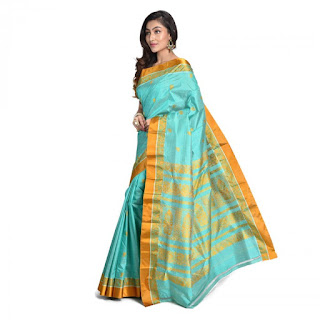“Garad” silk is traditionally woven by Bengal weavers in the district of “Murshidabad”, in West Bengal. “Garad” means white and it is woven with de-gummed undyed silk yarn. Hence, Garad sarees are usually of the natural colour of mulberry silk.
Bengali women, generally, wear a Garad Saree in some festive occasion or during religious ceremony. Silk yarn used to weave Garad sarees is not dyed which keeps the purity factor of the fabric intact and therefore these sarees have a sacred importance to the women in Bengal. Tracing back the history, one would fine that the kings and zamindars in ancient times used to drape themselves in Garad clothes to perform religious ceremonies and rituals.
The traditional Bengali saree, Garad or Gorod is distinguished by a plain red border on a white or off-white silk body. Variations of the traditional Garad saree come with striped borders and fine motifs along the body. However, these days Garad sarees are being woven with dyed yarns also for providing some colour variations.
At present, the matter of granting Garad Saree the status of Geographical Indication (G.I) in India is under process.



